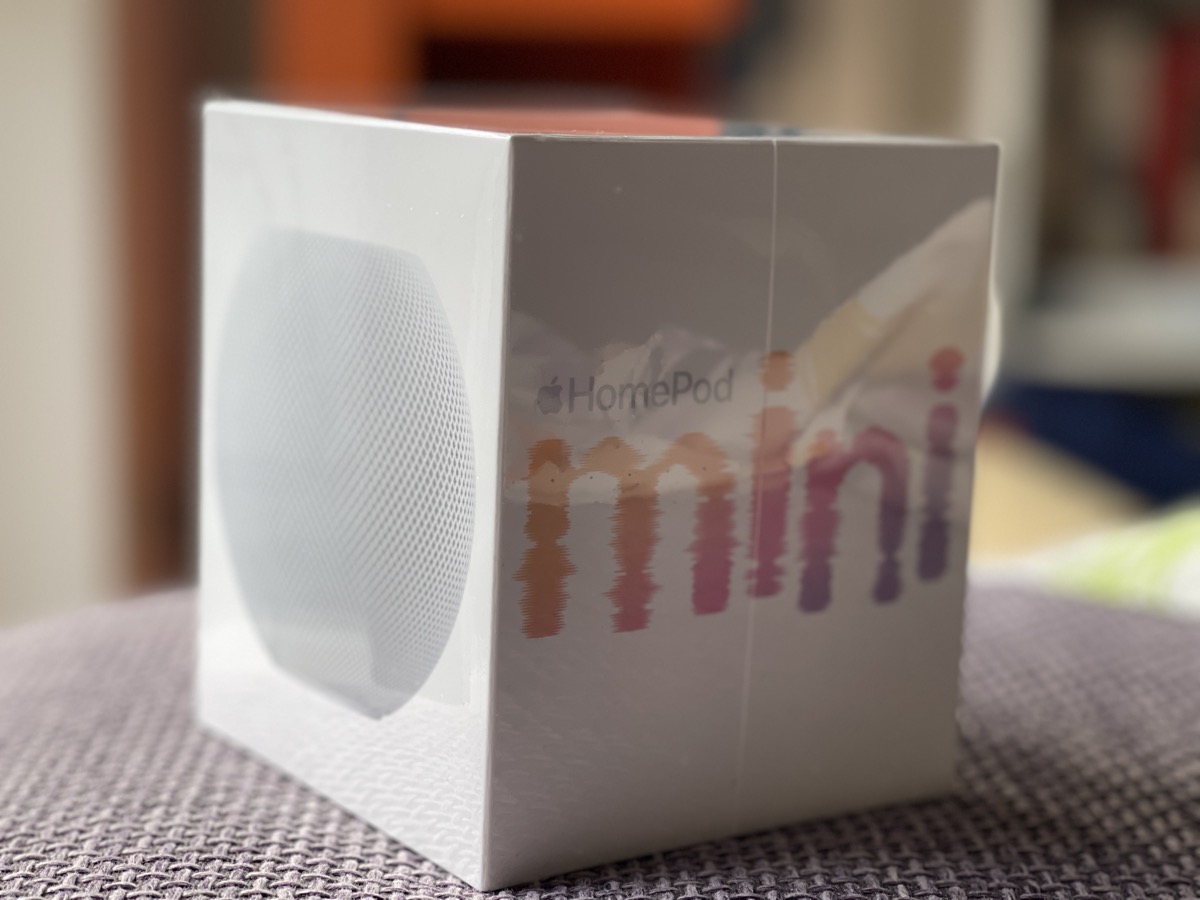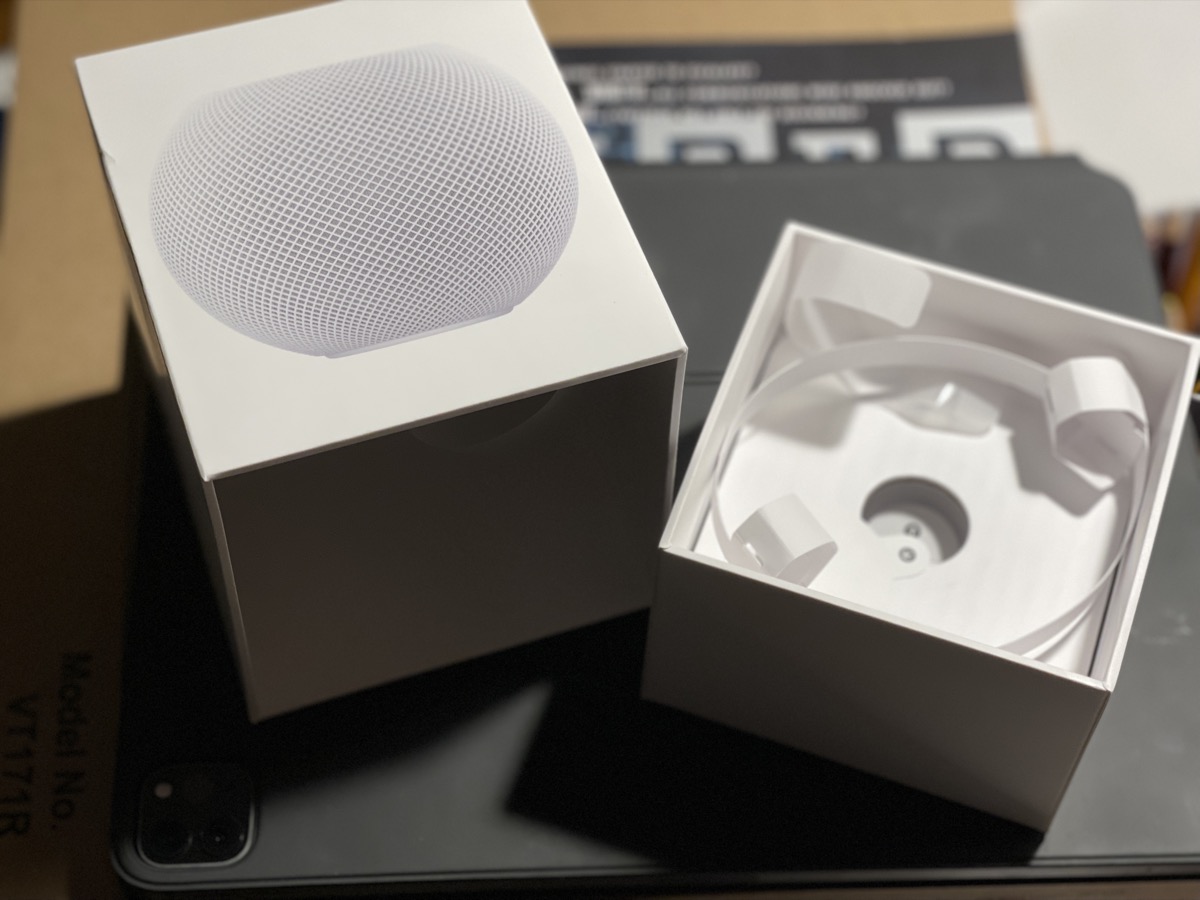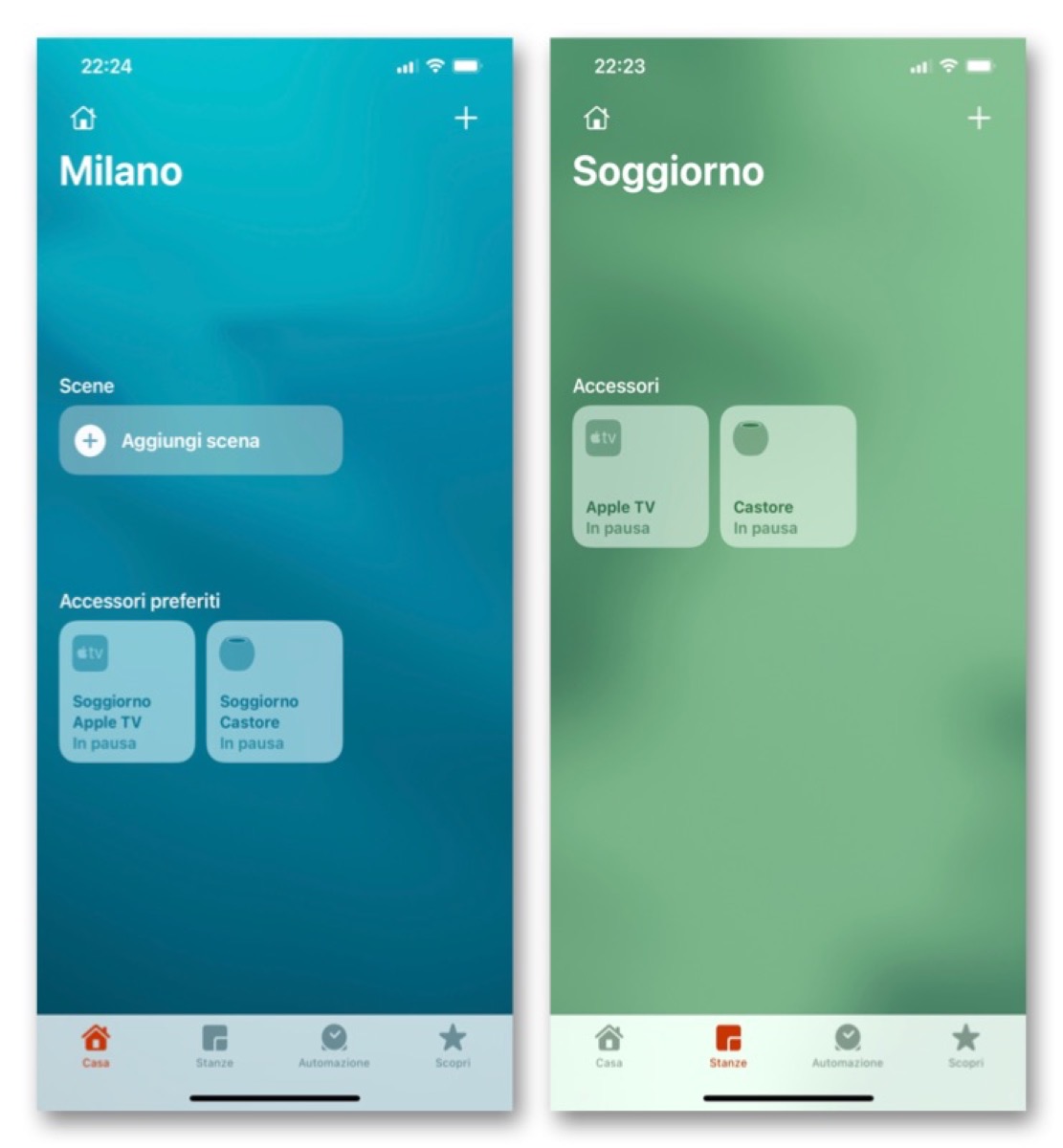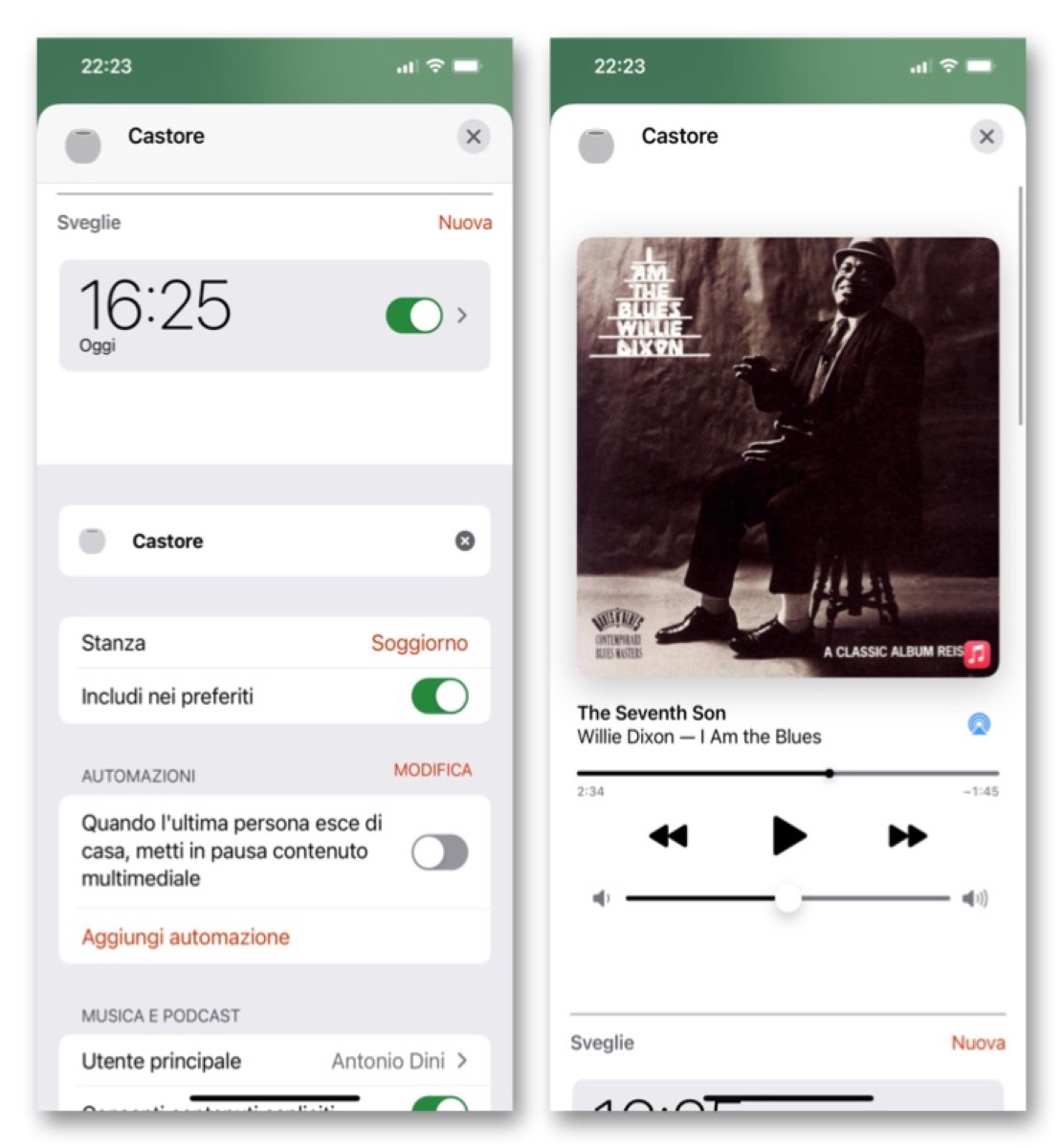We are talking about a product that does not exist, that is, it does not exist in Italy. But we hope it will arrive soon. The HomePod Mini is the second generation of Apple's smart speakers. The first, simply called HomePod, was bigger, more expensive ($ 350 plus taxes in the US) and that too never made it to Italy. Instead, this mini could (we hope) land in our country, because it has many interesting features, it is smart, it acts as a hub for the Apple House, that is HomeKit, and above all it works perfectly, except that Siri does not speak Italian but “only” all other languages.
We bought it in Spain, tested it for a few days, obviously using it in English. What follows is our experience with regards to digital assistant and above all audio speaker functions and partly as home cinema. For the home automation part, however, we will talk about it in another article.

Let's anticipate one thing right away: it is a small, fantastic object, which works very well and which has a truly remarkable musical quality and audio sensitivity. And it recognizes the voice even when the music is playing at full volume, as well as being an excellent hands-free kit for phone calls or video conferences, both from iPhone and iPad and Mac. But let's go in order.
How it's made
The HomePod Mini is a small spherical object, which comes in a very small rectangular box. It fits in one hand, we chose the white version instead of the black one (because in our opinion “it is more Apple”) and it has no type of indicator other than the light on the top of the sphere. The light indicates if it is active, and if anything if it is “thinking”, if it rings, if it is updating the firmware and other color-coded messages of this type. In addition, when it goes into speaker mode, for example for a phone call, it has an additional color code.
The top plastic surface is white and that's what lights up. It is a touch surface and has, difficult to see, even the symbols “+” and “-“. All this allows you to start and stop playback, but also to raise and lower the volume.
The white mesh of the surface is very pleasant to the touch but a little more difficult to keep clean. The same reasoning applies with the powder, probably also for the black version, which we have never held in hand.
In the box there is also the same 20 watt power supply that comes with iPads, equipped with a USB-C port, and the cable that comes out of the HomePod mini is not detachable from the sphere, and has the surface stiffened by a thin white mesh. .
Overall it is a very pleasant, stable object that leans well. The bottom is made of rubber and does not seem to leave any kind of mark on wood or other “sensitive” surfaces on which it can be placed.

How does it work
Basically, choose a surface to rest it on, plug it in, and you don't have to touch it anymore (unless you want to start the music or stop it with your fingertips on the back).
The device is WiFi and is powered by the chp S5, a Soc found on the Apple Watch series 6, but further customized for the small 3.3-inch speaker. The first time you have to configure it and this is done simply with an iPhone or an iPad with the latest generation of software and hardware. After approaching them, the phone asks if you want to configure the HomePod Mini and you can quickly proceed with the configuration.
Here lies the only problem in the functionality of the device for us Italians: nothing insuperable but we need to know. Since there is no Italian version (yet), you have to select another language from those available. We took English but our phone (and Siri) is set to the Italian language instead. This misaligns the two devices and creates three problems.
The first is that, when we assign the room in which the appliance is positioned, the first time it appears with the name in English (Living Room, in our case) but then it will be shown as Living Room. This is not a problem unless there are already other appliances. However, from the phone it is then possible to change the position with the Italian terms and everything is miraculously found in the same room as Casa.
The second problem is that Siri does not recognize our voice because the recognition training is in English while on the phone it is in Italian. This means that, in a context with several people present on the same network, the HomePod mini is not able to “recognize” the individual items.
The second problem opens up to the third one which is that of blocking a series of Siri functions: not recognizing the voice, it does not access that person's confidential data (for example the address book) and then is unable to pronounce appointments and everything. the rest. To do this, you need to change the language of the phone (which we did not do because it would have created many other problems).
All this, however, does not preclude being able to use the small speaker as an intercom to send messages to the inhabitants of the house.
Connected and prepared the appliance, the functions are very simple. Just call Hey Siri and you can ask various things. From the song, album, author or playlist to be played, to the possibility of interrogating Siri on various issues, configuring alarms and other functions partly linked, however, to the identity of the applicant.
The reason why people buy this type of device is to have an entry point into the smart home and this is a great starting point for Apple, along with the Apple TV: relatively cheap and powerful, with the privacy guarantee that the competitors cannot lead an ecosystem of products that are safer because they are based on protocols and controls that are greater than the competition.
The HomePod Mini can also act as a remote speaker for AirPlay2 and as a stereo speaker if approached to another HomePod Mini (we will see in the future) as did the first, more expensive, larger and more powerful HomePod.

How is it going
There are three aspects that we want to evaluate. The first is the use of HomePod Mini as a standalone tool . We started using it as soon as the update was available that allows you to “pass” the song played on the iPhone directly to the HomePod Mini simply by bringing it closer and we didn't understand at first why it was important. Actually, using this device with Apple Music it is obvious that there is a problem. When used on its own, the only possible command is voice. There is no app or way to remotely control it. This is particularly annoying if we ask to play a playlist, an album or a random sequence of songs, because we can't see what's coming. In short, there is no control.
The only possibility to interact in a structured way with the HomePod Mini without having to talk to it is by going to the Home app of the phone or iPad, press and hold the HomePod Mini icon and open the contextual tab where, by scrolling down, in addition to the song that is playing and the alarm (if configured but which in any case does not synchronize with the iPhone) is You can scroll and open the preferences, which give you access to a number of other configurations.
On the other hand, it is possible to use the HomePod Mini as a remote speaker for all the appliances in the house, but the mechanism is sometimes not very intuitive. In fact, you can “shoot” music from your phone, iPad, MacBook, Apple TV. However, the mechanism is fast and the performance is optimal, thanks above all to the audio quality of the small Apple speaker.
Finally, third dimension, HomePod Mini is an instrument capable of surprising for some uses, including particular sound . It is in fact possible to ask Siri to automatically turn off music playback after a certain time, or to wake us up with a song (again, no synchronization with the iPhone) and then to play, for example, a series of “white noises”, sounds surprisingly suitable for work or study, for example. The following are available: real white noise, stream, rain, ocean, night, forest and fireplace.

Conclusions
The device is small and powerful. The sound performance is surprising and, especially if placed on a wooden surface (which acts at least as a sounding board, even the surprise parquet floor is fine) makes a rich and articulated musical figure, with great dynamic range, bass present. but soft, an excellent presence on the midrange and trilling treble frequencies. The maximum volume is remarkably large and the effect of reverberation in the rooms is minimal thanks to the dynamic analysis of the surfaces and the echo they generate.
The device also has Apple's privacy guarantees, which is why we trust you more to activate Siri and voice recognition knowing that our conversations will never leave the room where Siri is.
Obviously, the lack of Italian is a handicap that forces us to review the way in which we communicate with the device (“asking” songs by Italian or non-Anglo-Saxon artists forces us to experiment with a strange “English” pronunciation that seems like a imitation of Totò or Alberto Sordi) but we hope it can be overcome: it is the real problem. The second problem, but very minor, is the lack of a dashboard that allows you to control the functions of the device remotely, rather than using it as a bluetooth speaker via AirPlay2.
The use of Apple Music only as an “internal” tool of the HomePod Mini (the one that responds to Siri's orders) is not a problem because, apart from the fact that, for example, Spotify can be used with AirPlay2, in the next iOS update it will be possible to decide to use Spotify as the default player and this will also extend to the HomePod Mini: Siri in this case will respond to orders not only for Apple Music.
Although the Italian language is missing and the integration (easily) with many services, from Apple News (absent in Italy) to the possibility of completing emails, sending messages, reading appointments and so on, in a few days we fell in love with this device we had bought by reading the favorable reviews and hoping to make it the center of “light” entertainment, an alternative to that of the home hi-fi system. The flexibility and ease of use pushes you to keep it in the bedroom or kitchen, but also in the living room or study, rather than taking it to the office, if you work in an environment where music is appreciated. In addition, the ability to interact with Siri especially for managing messages and the agenda, make it an indispensable companion at home. Too bad there isn't a real dedicated app.
In a future article we will analyze Homepod mini as a hub for home automation with truly unique features.
Pro
Cons
Price
99 euros including VAT. It cannot be purchased directly in Italy: like Homepod it is not marketed in our country but it can be purchased in Germany, France, United Kingdom or Spain with shipping costs included at a figure ranging from 110 to 120 Euros starting from eBay.





